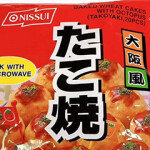Russia to combat IUU fishing with renewed monitoring system

A critical part of Russia’s renewed fishery industry monitoring system has been put into operation as of 1 July 2020.
The Digital Catch Journal (DCJ) is meant to make sure the industry’s statistics are collected in a transparent, timely, and complete way. The system, when in full operation, will significantly increase state oversight of the national catch and its real value.
The Industry Monitoring System (IMS) in fishing was launched in Russia in 1999. Now, 20 years later, it is far from modern and perfect, and fails to quickly collect data on fisheries activities.
This lack of information results not only in enough space for illegal, unreported and unregulated (IUU) catch, it also distorts the whole picture of what’s going on in the business – which is of particular importance when it comes to seafood exports. Fishers, and traders, are often tempted with the ability to declare cheaper export deals than have actually taken place in order to pay lower export fees, or to sell products abroad without any fee payment.
Four years ago, the Russian Federal Agency for Fisheries embarked on a long journey to renovate the IMS with advanced information technologies to bring more transparency to the field. Central to this renovation is the recently launched DCJ, a software for reporting catch in real-time by a vessel’s captain wherever it is fishing. After years of design and testing, the journal is now a ready-to-use product.
For a fishery, having a DCJ on board is not an obligation, for now, but it’s going to become one in the future. There are current efforts going through the government and parliament to implement laws that would require companies to install the software and report the statistics using the DCJ.
Each vessel and company using the new system are given a unique code, and data transfer is conducted through satellite-based internet.
The DCJ requires each fishing company and boat captain to report data covering all aspects of the company’s and vessel’s activities. A captain must fill out an extensive form indicating the results of his crew every day. The list of items to be communicated includes the catch includes: a breakdown of species harvested, the ship’s location, operations conducted within the time period, amount of hours spent for them, the current technical state of the vessel, the port of destination and the scheduled time of arrival, and more.
Companies, including ports and processing plants, report their input and output, the cost of the products, etc. on a biweekly and quarterly basis.
Control over the implementation of the monitoring is planned to be rather strict. In the future, the DCJ will be installed on each vessel with a gross registered tonnage of 80 metric tons or more, and a power level of 55 kW and higher.
In case a vessel fails to transfer location data due to breakdown of the equipment or the software, a monitoring center gets in touch with the captain by any means of communication. In case there is no possibility for a repair within a 48-hour period, the ship must go to a port.
The same rule is applied if a repeated breakdown happens after a repair. The absence of data transfer during more than 48 hours without the approval of the monitoring center leads to the seizure of a fishing license.
Tests of the system indicate that it should streamline the data reporting process for captains fishing in Russian waters.
“Instead of doing a lot of paperwork, captains can send the data with just a few clicks,” said Artyom Vilkin, CEO of The Centre of Fishery Monitoring and Communications (CFMC), the state-owned institute in charge of design and implementation of the IMS, on the upsides of the system.
CFMS has been actively promoting the DCJ among fisheries by organizing seminars and educating future users. Over the last few years, a few hundred vessels have been taking part in testing the systems in real-world working conditions to give feedback to CFMS and help improve the technology.
Testing has demonstrated that while some things need be tuned or changed – as in the case with any innovative system – general feedback from captains is positive.
“The DCJ is very convenient in use, though we experienced some difficulties, mainly technical ones. One time, kilograms were mixed up with tons. We could not report on the catch of one species as the system didn’t contain such an option. Generally, we liked it, it was fast. The most important thing for us is to have a reliable communications channel as we are fishing higher than 75 degrees latitude,” Dmitry Melekhin, representative of DEFA Fishing company – which has been testing the tool since 2018 – said.
Igor Cherkasov, a captain of a trawler in the Murmansk Traloviy Flot company, has been working with the DCJ since 2017.
“The system is being consistently updated and improved. There are both upsides and downsides, we hope that bugs will be fixed over course of time,” he commented. In his opinion, the DCJ offers a more thorough reporting of statistics, a step toward advanced technologies.
The promotion campaign by CFMS and the Fishery Agency is going on despite the restrictions on travel and offline communication due to COVID-19. The monthly online conference will be held to answers questions users may have regarding the DCJ and other aspects of the IMS.
“The first conference of this kind has turned out to be very productive, so we continue organizing them,” Vilkin said. He also mentioned a growing interest from fisheries to the digital journal noting than during the last online session there were almost no questions from fishermen.
The new system won’t just benefit Russia. At the moment, the DCJ is also being used in a test data exchange between Russian, Iceland, Norway, and the Faeroe Islands on the catch in Northern seas, focusing initially on the Barents Sea. The electronic reporting system is planned to be fully operational in 2021.
In Russia, the IMS will be further developed beyond solely monitoring purposes. It will be integrated with systems of other government bodies – the Frontier Guard Service and the Customs Service, for example – to secure better control and governance of the seafood sector and facilitate a smooth and fast exchange of data within the government.
It will also be integrated with The State Services portal, allowing fishing companies and other entities in the sector to do a lot of paperwork online, and thus save a lot of time and avoid mistakes. For example, fishing licenses as well as veterinary certificates will be issued in an electronic form.
Photo courtesy of Alexey Pevnev






Share